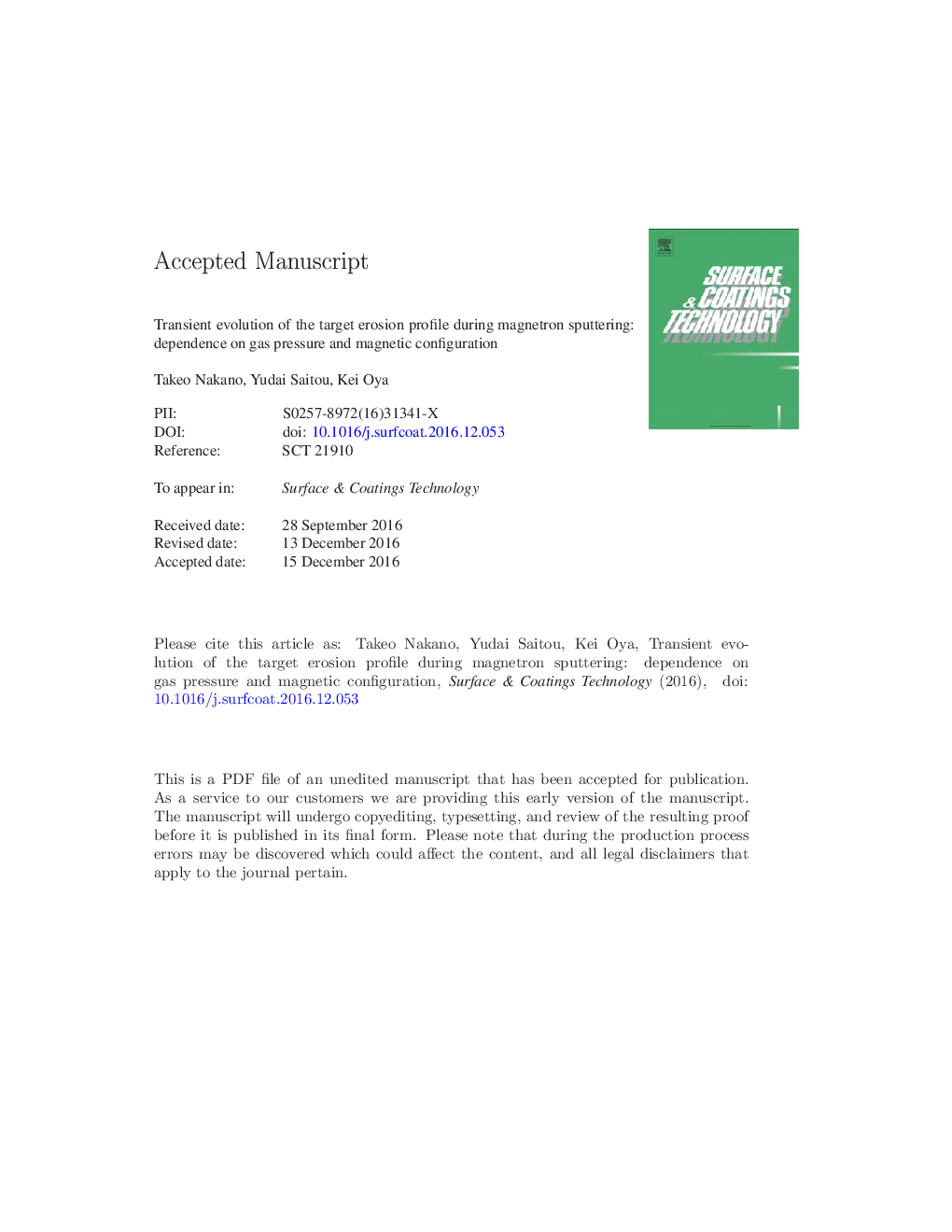| Article ID | Journal | Published Year | Pages | File Type |
|---|---|---|---|---|
| 5464616 | Surface and Coatings Technology | 2017 | 33 Pages |
Abstract
The growth of the target erosion profile (racetrack) in DC magnetron sputtering has been experimentally studied at a modest target power. Unbalanced magnetron sputtering (UBMS) and balanced magnetron sputtering (BMS) of a copper target were conducted at Ar gas pressures between 0.38-2.0Pa at a constant DC discharge power of 100W. At time intervals of several hours throughout the target life, the target was removed from the chamber, and its erosion profile was measured with a height gauge. The racetrack width was found to have an interesting pressure dependence. Higher argon gas pressure resulted in a wider initial track width in both the UBMS and BMS configurations. As the sputter erosion of the target proceeded, the track width became narrower at higher gas pressures (â¥1.0Pa). At lower gas pressures, the track width was mostly unchanged and even showed a slight increase in the case of 0.38Pa in UBMS. As a result, the order of the final width was reversed: the higher gas pressure resulted in a narrower track width. The origin of this behavior was ascribed to the difference in the plasma sheath thickness and the free path of secondary electrons.
Related Topics
Physical Sciences and Engineering
Materials Science
Nanotechnology
Authors
Takeo Nakano, Yudai Saitou, Kei Oya,
